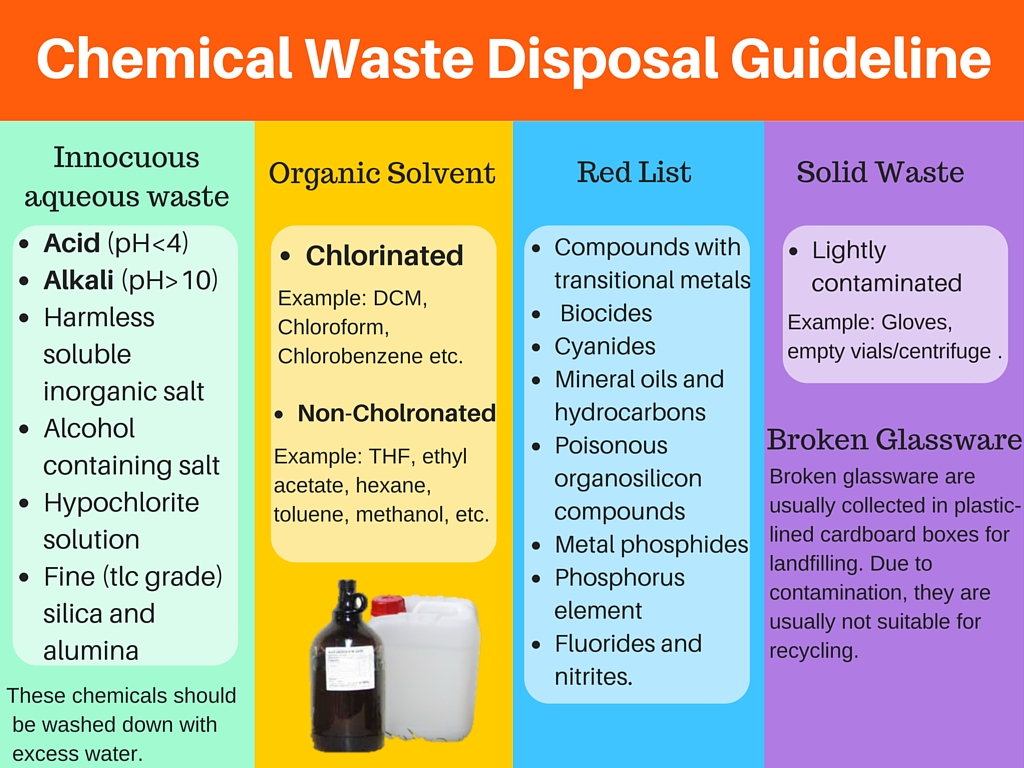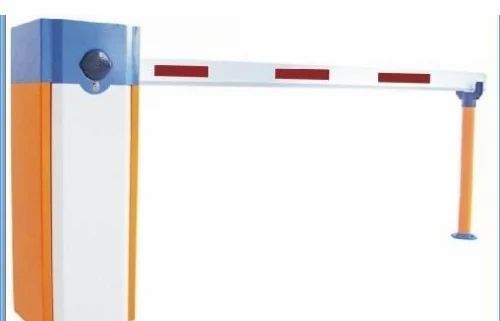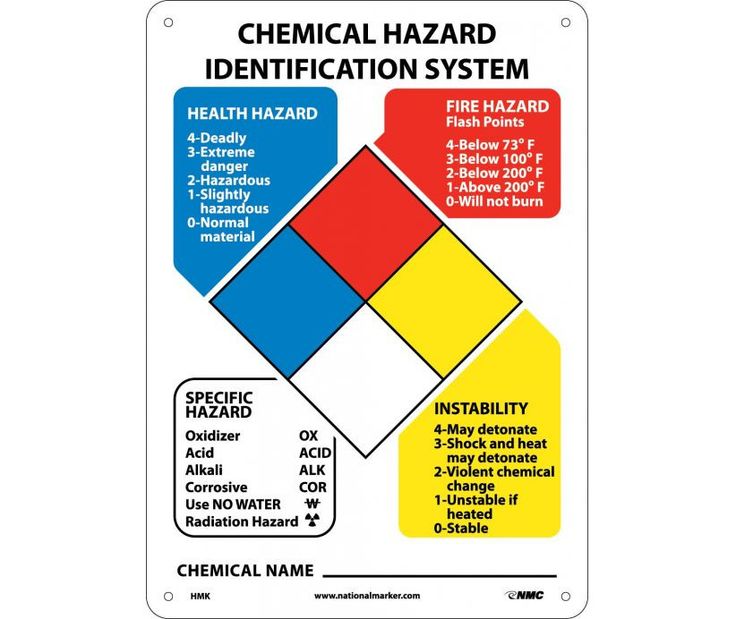
Storage WorkSafe guide Joint Australian/New Zealand Standards AS/NZS 1715:1994 Selection, use and maintenance of respiratory protective devices AS/NZS 1716:2003 Respiratory protective devices AS/NZS 2430.3:1997 Classification of hazardous areas – Examples of area classification AS/NZS 3833:1998 The storage and handling of mixed classes of
Classification of hazardous areas Examples of area
Safety Solutions Resources. HAZARDOUS AREAS CLASSIFICATION. Competency Training’s Hazardous Areas Classification course makes up the first three days of this Hazardous Areas Classification and Design course. Students who will not be involved in the planning and design of the installation may opt to attend only the Classification section of the course., Hazardous Area Classification & Design. What is the main approach for hazardous area classification and which standards apply? Australian standard is AS/NZS 60079.10.1 which is the default. If the hazardous area end is insulated in a suitable terminal then the safe area end must be earthed..
Classification of hazardous areas (other than mines) having flammable gases & vapours for electrical installation IEC 60079-10 Ed4 2002/06 Electrical Apparatus for explosive gas atmospheres Part 10: Classification of hazardous area IS 9570-1980 Classification of flammable gases & vapours with air according to their maximum experimental safe gaps perhaps the area should be classified as a hazardous area. 2.3 Current IEC Standards Fifteen years ago Australia committed to a policy of working towards the adoption of IEC standards related to hazardous areas. At this point in time all of the equipment and classification standards have been adopted
Diesel is a hazardous substance and two grades of diesel fuel are approved for use in New Zealand: automotive gas oil and marine diesel; low flash point diesel; For simplicity, both are treated as flammable liquids, low hazard. In addition, diesel may be blended with biodiesel in … On 1 December 2017 the rules around managing hazardous substances in the workplace transferred from the Hazardous Substances and New Organisms Act (HSNO) to the Health and Safety at Work (Hazardous Substances) Regulations. You can find out more about what’s changed and how it might affect you on the WorkSafe New Zealand website.
nZ = purged pressurized apparatus, n. Area Classification; Hazardous Atmosphere Category (Gas or Dust Grouping) Area Classification. Explosion Protection Standard (EX-IEC/ATEX/CEC, AEx-NEC) Method of Explosion Protection. Hazardous Atmosphere Category (Gas or Dust Grouping) STANDARDS AUSTRALIA/STANDARDS NEW ZEALAND Australian/New Zealand Standard Classification of hazardous areas Part 3.1: Examples of area classification—General 1 SCOPE This Standard provides examples of area classification and is based on the internationally accepted concept which recognizes the different degrees of probability with which
nhp-nz.com Easy Selection Guide hazardous area equipment Ex. 1 step Group II Group III Explosive Gas Atmosphere Explosive Dust Atmosphere Sub-Division Ignition Energy Sub division Explosive A hazardous area is a place where concentrations of flammable gases, vapors or dusts occur. Module 2 of the hazardous Waste Guidelines outlines a nationally consistent approach to the disposal of hazardous waste to landfills. New Zealand's net position under the Kyoto Protocol. This guide outlines a nationally consistent approach to the disposal of waste to landfills. Module 2 of the Hazardous Waste Guidelines outlines a
On 1 December 2017 the rules around managing hazardous substances in the workplace transferred from the Hazardous Substances and New Organisms Act (HSNO) to the Health and Safety at Work (Hazardous Substances) Regulations. You can find out more about what’s changed and how it might affect you on the WorkSafe New Zealand website. Classification of hazardous areas - Examples of area classification - Miscellaneous This document has been re-assessed by the committee, and judged to still be up to date. WARNING: SUPERSEDED Standard.
Competency Training’s Hazardous Areas Awareness introduces a range of concepts relating to explosive atmospheres, including the legislative requirements, relevant standards and common safety procedures. A hazardous area is a three-dimensional space in which an explosive atmosphere is or may be expected to be present or form. Electrical equipment within the hazardous area must be suitably rated and effectively earthed to ensure that any ignition risks are adequately controlled.
nhp-nz.com Easy Selection Guide hazardous area equipment Ex. 1 step Group II Group III Explosive Gas Atmosphere Explosive Dust Atmosphere Sub-Division Ignition Energy Sub division Explosive A hazardous area is a place where concentrations of flammable gases, vapors or dusts occur. perhaps the area should be classified as a hazardous area. 2.3 Current IEC Standards Fifteen years ago Australia committed to a policy of working towards the adoption of IEC standards related to hazardous areas. At this point in time all of the equipment and classification standards have been adopted
STANDARDS AUSTRALIA/STANDARDS NEW ZEALAND Australian/New Zealand Standard Classification of hazardous areas Part 3.1: Examples of area classification—General 1 SCOPE This Standard provides examples of area classification and is based on the internationally accepted concept which recognizes the different degrees of probability with which nhp-nz.com Easy Selection Guide hazardous area equipment Ex. 1 step Group II Group III Explosive Gas Atmosphere Explosive Dust Atmosphere Sub-Division Ignition Energy Sub division Explosive A hazardous area is a place where concentrations of flammable gases, vapors or dusts occur.
The HAIL is intended to identify most situations in New Zealand where hazardous substances could cause, and in many cases have caused, land contamination. The HAIL groups similar industries together, which typically use or store hazardous substances that could cause contamination if these substances escaped from safe storage, were disposed of A hazardous area is a three-dimensional space in which an explosive atmosphere is or may be expected to be present or form. Electrical equipment within the hazardous area must be suitably rated and effectively earthed to ensure that any ignition risks are adequately controlled.
10/19/2009В В· Standards Australia has published three new hazardous areas standards to supersede existing standards in Australia and New Zealand. The new standards update safety measures for people working within explosive atmospheres in hazardous areas and bring local practices more in line with international standards. Consulting Services for Hazardous Locations. Unique, Timely Solutions for Your Project's Success. Position yourself for success from the earliest stages of product development. From concept through market entry, Intertek helps you prevent product failures and reach market faster. Our team of experienced consultants can provide additional support.
Classification of hazardous areas Examples of area

Hazardous Area Zones Zone 1 & Zone 2 ATEX Electrical. MTL products, which are part of Eaton's Crouse-Hinds series, operate and protect assets in harsh conditions. Find out more here., Classification of hazardous areas (other than mines) having flammable gases & vapours for electrical installation IEC 60079-10 Ed4 2002/06 Electrical Apparatus for explosive gas atmospheres Part 10: Classification of hazardous area IS 9570-1980 Classification of flammable gases & vapours with air according to their maximum experimental safe gaps.
Hazardous Area Classification & Design Competency Training

Diesel WorkSafe. Hazardous Area Standards AS-NZS 60079 & Other AS-NZS Standards Standards Australia and Standards New Zealand are the respective nation's peak non-government Standards organisations. Storing hazardous substances safely is an important part of protecting you and your workers. This includes storing only what you need, ensuring that incompatible substances are not stored together, and that decanted substances are stored in the right type of container and correctly labelled..
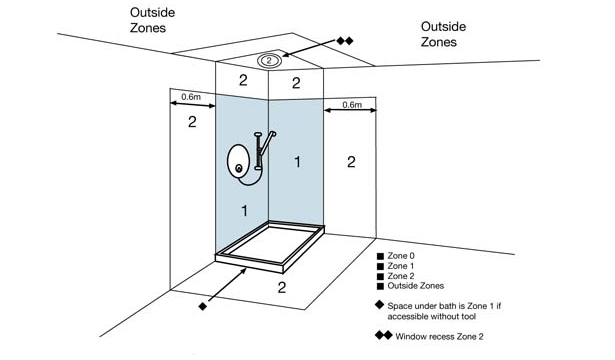
identifying zone 0, zone 1, and zone 2 hazardous areas By Raytec / December 1st, 2016 / There are currently 0 comments A hazardous area can be defined as any location where there is … Hazardous Substances (Classification) Notice 2017 (Minimum Degrees of Hazard) Notice 2017, as published in the New Zealand Gazette, 3 November 2017, Notice No. 2017-au5631. The table set out in Schedule 7 is intended as a guide to the classification system under this notice. 5. …
On 1 December 2017 the rules around managing hazardous substances in the workplace transferred from the Hazardous Substances and New Organisms Act (HSNO) to the Health and Safety at Work (Hazardous Substances) Regulations. You can find out more about what’s changed and how it might affect you on the WorkSafe New Zealand website. Guidance on the Classification of Hazardous Chemicals under the . WHS. it may not be possible to directly translate its hazardous substance classification into a GHS classification because of differences in cut-off concentrations used in the Approved Criteria and the GHS. Guidance on the Classification of Hazardous Chemicals under the
Guidance on the Classification of Hazardous Chemicals under the . WHS. it may not be possible to directly translate its hazardous substance classification into a GHS classification because of differences in cut-off concentrations used in the Approved Criteria and the GHS. Guidance on the Classification of Hazardous Chemicals under the On 1 December 2017 the rules around managing hazardous substances in the workplace transferred from the Hazardous Substances and New Organisms Act (HSNO) to the Health and Safety at Work (Hazardous Substances) Regulations. You can find out more about what’s changed and how it might affect you on the WorkSafe New Zealand website.
Hazardous Area Classification & Design. What is the main approach for hazardous area classification and which standards apply? Australian standard is AS/NZS 60079.10.1 which is the default. If the hazardous area end is insulated in a suitable terminal then the safe area end must be earthed. 10/19/2009В В· Standards Australia has published three new hazardous areas standards to supersede existing standards in Australia and New Zealand. The new standards update safety measures for people working within explosive atmospheres in hazardous areas and bring local practices more in line with international standards.
Zone Hazardous Location 33 Introduction A major safety concern in industrial plants is the occurrence of fires and explosions. No other aspect of industrial safety receives more attention in the form of codes, standards, technical papers, and engineering design. Classification of hazardous areas - Examples of area classification - Miscellaneous This document has been re-assessed by the committee, and judged to still be up to date. WARNING: SUPERSEDED Standard.
Classification of hazardous areas - Examples of area classification - Miscellaneous This document has been re-assessed by the committee, and judged to still be up to date. WARNING: SUPERSEDED Standard. Competency Training’s Hazardous Areas Awareness introduces a range of concepts relating to explosive atmospheres, including the legislative requirements, relevant standards and common safety procedures.
1/6/2010 · Electricity Safety Regulations 2010 Standards for hazardous areas and electromedical equipment. 01/06/2010. 14 May 2010. Classification of areas 'There have been several high profile hazardous area accidents and incidents in New Zealand recently and it is thought that if the relevant Standards were followed correctly, these accidents HAZARDOUS AREAS CLASSIFICATION. Competency Training’s Hazardous Areas Classification course makes up the first three days of this Hazardous Areas Classification and Design course. Students who will not be involved in the planning and design of the installation may opt to attend only the Classification section of the course.
Hazardous Substances (Classification) Notice 2017 (Minimum Degrees of Hazard) Notice 2017, as published in the New Zealand Gazette, 3 November 2017, Notice No. 2017-au5631. The table set out in Schedule 7 is intended as a guide to the classification system under this notice. 5. … Consulting Services for Hazardous Locations. Unique, Timely Solutions for Your Project's Success. Position yourself for success from the earliest stages of product development. From concept through market entry, Intertek helps you prevent product failures and reach market faster. Our team of experienced consultants can provide additional support.
For full details on what an ERP is and what you must include in it, see Worksafe New Zealand – Emergency Plans. Trigger quantities decide what you must do. A вЂtrigger quantity’ is a specific amount of hazardous substance of a particular type or classification. Classification of hazardous areas (other than mines) having flammable gases & vapours for electrical installation IEC 60079-10 Ed4 2002/06 Electrical Apparatus for explosive gas atmospheres Part 10: Classification of hazardous area IS 9570-1980 Classification of flammable gases & vapours with air according to their maximum experimental safe gaps
HAZARDOUS AREAS CLASSIFICATION. Competency Training’s Hazardous Areas Classification course makes up the first three days of this Hazardous Areas Classification and Design course. Students who will not be involved in the planning and design of the installation may opt to attend only the Classification section of the course. Storing hazardous substances safely is an important part of protecting you and your workers. This includes storing only what you need, ensuring that incompatible substances are not stored together, and that decanted substances are stored in the right type of container and correctly labelled.
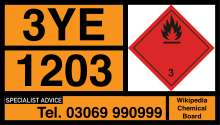
Diesel is a hazardous substance and two grades of diesel fuel are approved for use in New Zealand: automotive gas oil and marine diesel; low flash point diesel; For simplicity, both are treated as flammable liquids, low hazard. In addition, diesel may be blended with biodiesel in … Consulting Services for Hazardous Locations. Unique, Timely Solutions for Your Project's Success. Position yourself for success from the earliest stages of product development. From concept through market entry, Intertek helps you prevent product failures and reach market faster. Our team of experienced consultants can provide additional support.
Hazardous Area Dossier Verification Dossier E-x Solutions

Axis Ltd Contact us. 1/14/2017 · This video explains how to figure out if you need a hazardous area classification, why you have to do it, and who you should contact to help. Hazardous area classification in Australia/NZ, Hazardous Substances (Classification) Notice 2017 (Minimum Degrees of Hazard) Notice 2017, as published in the New Zealand Gazette, 3 November 2017, Notice No. 2017-au5631. The table set out in Schedule 7 is intended as a guide to the classification system under this notice. 5. ….
Hazardous areas worksafe.qld.gov.au
Consulting Services for Hazardous Locations. The above unit standards were reviewed in collaboration with industry representatives, other standard-setting bodies, and other key stakeholders, and updated in accordance with the latest version of AS/NZS 4761.1.2008, Competencies for working with electrical equipment for hazardous areas (EEHA) Part 1 - Competency standards., Diesel is a hazardous substance and two grades of diesel fuel are approved for use in New Zealand: automotive gas oil and marine diesel; low flash point diesel; For simplicity, both are treated as flammable liquids, low hazard. In addition, diesel may be blended with biodiesel in ….
Product Manager - Hazardous Area Equipment Technical News Issue #69 - Autumn 2014 (updated May 2015) nhp.com.au nhp-nz.com Industrial Electrical and Automation Products, Systems and Solutions Introductory guide to hazardous areas in Australia and New Zealand In New Zealand, a hazardous area location is defined as a place where concentrations of flammable gases, vapors, or dusts occur. Electrical equipment that must be installed in hazardous area locations is especially designed and tested to ensure it does not initiate an explosion, due to arcing contacts or high surface temperature of equipment.
In New Zealand, a hazardous area location is defined as a place where concentrations of flammable gases, vapors, or dusts occur. Electrical equipment that must be installed in hazardous area locations is especially designed and tested to ensure it does not initiate an explosion, due to arcing contacts or high surface temperature of equipment. Hazardous Area and Explosive Area Electrical Installations MIEE 2011 – Amend1 – 6 April 2016 Chapter 15 – Hazardous Area Electrical Installations 1 of 8 The Hazardous Area classification standards (AS/NZS 60079.10.1 and AS/NZS 60079.10.2) cannot be used to classify Explosives Hazardous Areas and Restricted Electrical Areas.
On 1 December 2017 the rules around managing hazardous substances in the workplace transferred from the Hazardous Substances and New Organisms Act (HSNO) to the Health and Safety at Work (Hazardous Substances) Regulations. You can find out more about what’s changed and how it might affect you on the WorkSafe New Zealand website. guide Joint Australian/New Zealand Standards AS/NZS 1715:1994 Selection, use and maintenance of respiratory protective devices AS/NZS 1716:2003 Respiratory protective devices AS/NZS 2430.3:1997 Classification of hazardous areas – Examples of area classification AS/NZS 3833:1998 The storage and handling of mixed classes of
The above unit standards were reviewed in collaboration with industry representatives, other standard-setting bodies, and other key stakeholders, and updated in accordance with the latest version of AS/NZS 4761.1.2008, Competencies for working with electrical equipment for hazardous areas (EEHA) Part 1 - Competency standards. Diesel is a hazardous substance and two grades of diesel fuel are approved for use in New Zealand: automotive gas oil and marine diesel; low flash point diesel; For simplicity, both are treated as flammable liquids, low hazard. In addition, diesel may be blended with biodiesel in …
The above unit standards were reviewed in collaboration with industry representatives, other standard-setting bodies, and other key stakeholders, and updated in accordance with the latest version of AS/NZS 4761.1.2008, Competencies for working with electrical equipment for hazardous areas (EEHA) Part 1 - Competency standards. HAZARDOUS AREAS CLASSIFICATION. Competency Training’s Hazardous Areas Classification course makes up the first three days of this Hazardous Areas Classification and Design course. Students who will not be involved in the planning and design of the installation may opt to attend only the Classification section of the course.
The definition of the hazardous area zones represent the likelihood of hazardous gas, dust or other hazards being present in a working area. Hazardous area zones where flammable gases may be present are usually defined and marked on Site Area Classification Drawings. The following hazardous area zone definitions are from IEC 60079-10. 1/14/2017В В· This video explains how to figure out if you need a hazardous area classification, why you have to do it, and who you should contact to help. Hazardous area classification in Australia/NZ
Hazardous Substances (Classification) Notice 2017 (Minimum Degrees of Hazard) Notice 2017, as published in the New Zealand Gazette, 3 November 2017, Notice No. 2017-au5631. The table set out in Schedule 7 is intended as a guide to the classification system under this notice. 5. … identifying zone 0, zone 1, and zone 2 hazardous areas By Raytec / December 1st, 2016 / There are currently 0 comments A hazardous area can be defined as any location where there is …
Product Manager - Hazardous Area Equipment Technical News Issue #69 - Autumn 2014 (updated May 2015) nhp.com.au nhp-nz.com Industrial Electrical and Automation Products, Systems and Solutions Introductory guide to hazardous areas in Australia and New Zealand Area Classification • Based on Probability not consequence; – Outcome Area Zoning: • Petrochemical hazardous areas are split into Zones 0, 1, 2 and Non Hazardous[NH] by application of the standard, (Refer to AS/NZS 60079-10-1); • Non Hazardous often determined by Negligible extent NE • Dust hazardous areas are split into Zones 20, 21
guide Joint Australian/New Zealand Standards AS/NZS 1715:1994 Selection, use and maintenance of respiratory protective devices AS/NZS 1716:2003 Respiratory protective devices AS/NZS 2430.3:1997 Classification of hazardous areas – Examples of area classification AS/NZS 3833:1998 The storage and handling of mixed classes of Classification of hazardous areas - Examples of area classification - Miscellaneous This document has been re-assessed by the committee, and judged to still be up to date. WARNING: SUPERSEDED Standard.
For full details on what an ERP is and what you must include in it, see Worksafe New Zealand – Emergency Plans. Trigger quantities decide what you must do. A вЂtrigger quantity’ is a specific amount of hazardous substance of a particular type or classification. Area Classification • Based on Probability not consequence; – Outcome Area Zoning: • Petrochemical hazardous areas are split into Zones 0, 1, 2 and Non Hazardous[NH] by application of the standard, (Refer to AS/NZS 60079-10-1); • Non Hazardous often determined by Negligible extent NE • Dust hazardous areas are split into Zones 20, 21
Product Manager - Hazardous Area Equipment Technical News Issue #69 - Autumn 2014 (updated May 2015) nhp.com.au nhp-nz.com Industrial Electrical and Automation Products, Systems and Solutions Introductory guide to hazardous areas in Australia and New Zealand nZ = purged pressurized apparatus, n. Area Classification; Hazardous Atmosphere Category (Gas or Dust Grouping) Area Classification. Explosion Protection Standard (EX-IEC/ATEX/CEC, AEx-NEC) Method of Explosion Protection. Hazardous Atmosphere Category (Gas or Dust Grouping)
NEW ZEALAND STANDARD Standards New Zealand

Zone Hazardous Location Literature Library. 10/19/2009В В· Standards Australia has published three new hazardous areas standards to supersede existing standards in Australia and New Zealand. The new standards update safety measures for people working within explosive atmospheres in hazardous areas and bring local practices more in line with international standards., Hazardous Area Standards AS-NZS 60079 & Other AS-NZS Standards Standards Australia and Standards New Zealand are the respective nation's peak non-government Standards organisations..
Electricity Safety Regulations 2010 Standards for. HAZARDOUS AREAS CLASSIFICATION. Competency Training’s Hazardous Areas Classification course makes up the first three days of this Hazardous Areas Classification and Design course. Students who will not be involved in the planning and design of the installation may opt to attend only the Classification section of the course., The definition of the hazardous area zones represent the likelihood of hazardous gas, dust or other hazards being present in a working area. Hazardous area zones where flammable gases may be present are usually defined and marked on Site Area Classification Drawings. The following hazardous area zone definitions are from IEC 60079-10..
Hazardous Area Classification & Design Competency Training
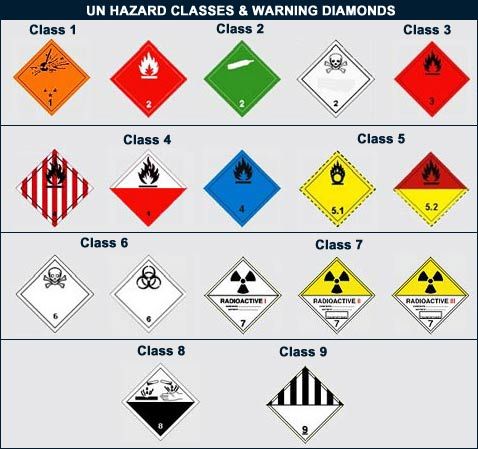
Hazardous Area Zones Zone 1 & Zone 2 ATEX Electrical. The definition of the hazardous area zones represent the likelihood of hazardous gas, dust or other hazards being present in a working area. Hazardous area zones where flammable gases may be present are usually defined and marked on Site Area Classification Drawings. The following hazardous area zone definitions are from IEC 60079-10. The definition of the hazardous area zones represent the likelihood of hazardous gas, dust or other hazards being present in a working area. Hazardous area zones where flammable gases may be present are usually defined and marked on Site Area Classification Drawings. The following hazardous area zone definitions are from IEC 60079-10..

guide Joint Australian/New Zealand Standards AS/NZS 1715:1994 Selection, use and maintenance of respiratory protective devices AS/NZS 1716:2003 Respiratory protective devices AS/NZS 2430.3:1997 Classification of hazardous areas – Examples of area classification AS/NZS 3833:1998 The storage and handling of mixed classes of nZ = purged pressurized apparatus, n. Area Classification; Hazardous Atmosphere Category (Gas or Dust Grouping) Area Classification. Explosion Protection Standard (EX-IEC/ATEX/CEC, AEx-NEC) Method of Explosion Protection. Hazardous Atmosphere Category (Gas or Dust Grouping)
Hazardous Area Classification Please contact us if you have been to one of our courses and would like access to these resources. Useful Links MHF Industry Group. SSL supports the industry group of operators and stakeholders of Major Hazard Facilities. Join the discussion at … Hazardous Area and Explosive Area Electrical Installations MIEE 2011 – Amend1 – 6 April 2016 Chapter 15 – Hazardous Area Electrical Installations 1 of 8 The Hazardous Area classification standards (AS/NZS 60079.10.1 and AS/NZS 60079.10.2) cannot be used to classify Explosives Hazardous Areas and Restricted Electrical Areas.
In New Zealand, a hazardous area location is defined as a place where concentrations of flammable gases, vapors, or dusts occur. Electrical equipment that must be installed in hazardous area locations is especially designed and tested to ensure it does not initiate an explosion, due to arcing contacts or high surface temperature of equipment. nZ = purged pressurized apparatus, n. Area Classification; Hazardous Atmosphere Category (Gas or Dust Grouping) Area Classification. Explosion Protection Standard (EX-IEC/ATEX/CEC, AEx-NEC) Method of Explosion Protection. Hazardous Atmosphere Category (Gas or Dust Grouping)
All of our Hazardous Area Verification Dossiers are prepared according to the requirements of the Australian Standards AS/NZS 60079.14 and AS/NZS 60079.17. A Verification Dossier must contain: Area classification documents, with plans showing the classification and extent of the hazardous areas The HAIL is intended to identify most situations in New Zealand where hazardous substances could cause, and in many cases have caused, land contamination. The HAIL groups similar industries together, which typically use or store hazardous substances that could cause contamination if these substances escaped from safe storage, were disposed of
Hazardous Area Classification & Design. What is the main approach for hazardous area classification and which standards apply? Australian standard is AS/NZS 60079.10.1 which is the default. If the hazardous area end is insulated in a suitable terminal then the safe area end must be earthed. For full details on what an ERP is and what you must include in it, see Worksafe New Zealand – Emergency Plans. Trigger quantities decide what you must do. A вЂtrigger quantity’ is a specific amount of hazardous substance of a particular type or classification.
For full details on what an ERP is and what you must include in it, see Worksafe New Zealand – Emergency Plans. Trigger quantities decide what you must do. A вЂtrigger quantity’ is a specific amount of hazardous substance of a particular type or classification. identifying zone 0, zone 1, and zone 2 hazardous areas By Raytec / December 1st, 2016 / There are currently 0 comments A hazardous area can be defined as any location where there is …
nhp-nz.com Easy Selection Guide hazardous area equipment Ex. 1 step Group II Group III Explosive Gas Atmosphere Explosive Dust Atmosphere Sub-Division Ignition Energy Sub division Explosive A hazardous area is a place where concentrations of flammable gases, vapors or dusts occur. A hazardous area is a three-dimensional space in which an explosive atmosphere is or may be expected to be present or form. Electrical equipment within the hazardous area must be suitably rated and effectively earthed to ensure that any ignition risks are adequately controlled.
identifying zone 0, zone 1, and zone 2 hazardous areas By Raytec / December 1st, 2016 / There are currently 0 comments A hazardous area can be defined as any location where there is … Consulting Services for Hazardous Locations. Unique, Timely Solutions for Your Project's Success. Position yourself for success from the earliest stages of product development. From concept through market entry, Intertek helps you prevent product failures and reach market faster. Our team of experienced consultants can provide additional support.
guide Joint Australian/New Zealand Standards AS/NZS 1715:1994 Selection, use and maintenance of respiratory protective devices AS/NZS 1716:2003 Respiratory protective devices AS/NZS 2430.3:1997 Classification of hazardous areas – Examples of area classification AS/NZS 3833:1998 The storage and handling of mixed classes of Product Manager - Hazardous Area Equipment Technical News Issue #69 - Autumn 2014 (updated May 2015) nhp.com.au nhp-nz.com Industrial Electrical and Automation Products, Systems and Solutions Introductory guide to hazardous areas in Australia and New Zealand
identifying zone 0, zone 1, and zone 2 hazardous areas By Raytec / December 1st, 2016 / There are currently 0 comments A hazardous area can be defined as any location where there is … nZ = purged pressurized apparatus, n. Area Classification; Hazardous Atmosphere Category (Gas or Dust Grouping) Area Classification. Explosion Protection Standard (EX-IEC/ATEX/CEC, AEx-NEC) Method of Explosion Protection. Hazardous Atmosphere Category (Gas or Dust Grouping)
identifying zone 0, zone 1, and zone 2 hazardous areas By Raytec / December 1st, 2016 / There are currently 0 comments A hazardous area can be defined as any location where there is … 1/6/2010 · Electricity Safety Regulations 2010 Standards for hazardous areas and electromedical equipment. 01/06/2010. 14 May 2010. Classification of areas 'There have been several high profile hazardous area accidents and incidents in New Zealand recently and it is thought that if the relevant Standards were followed correctly, these accidents
